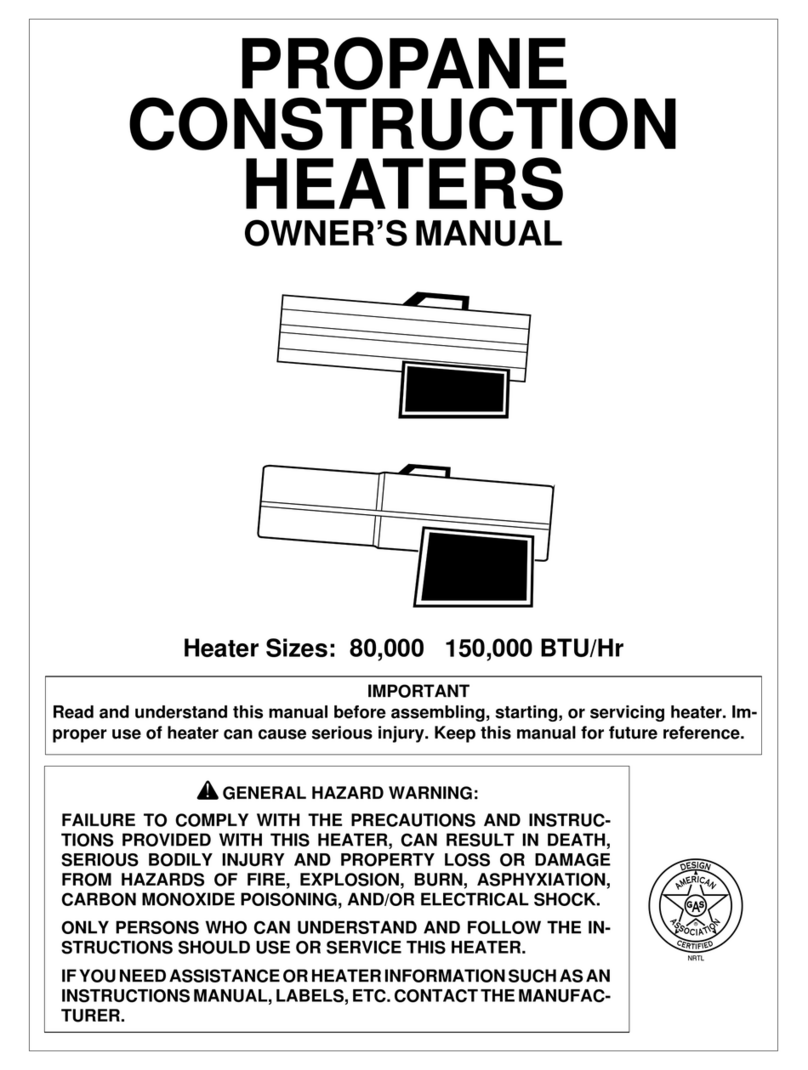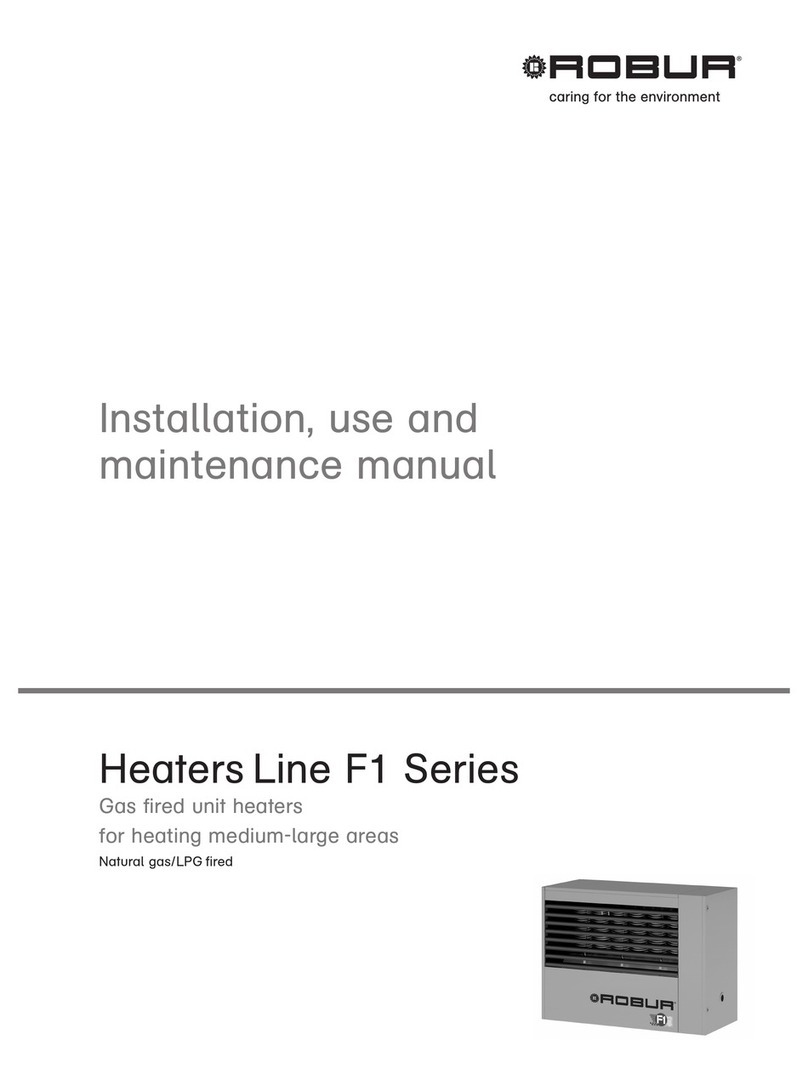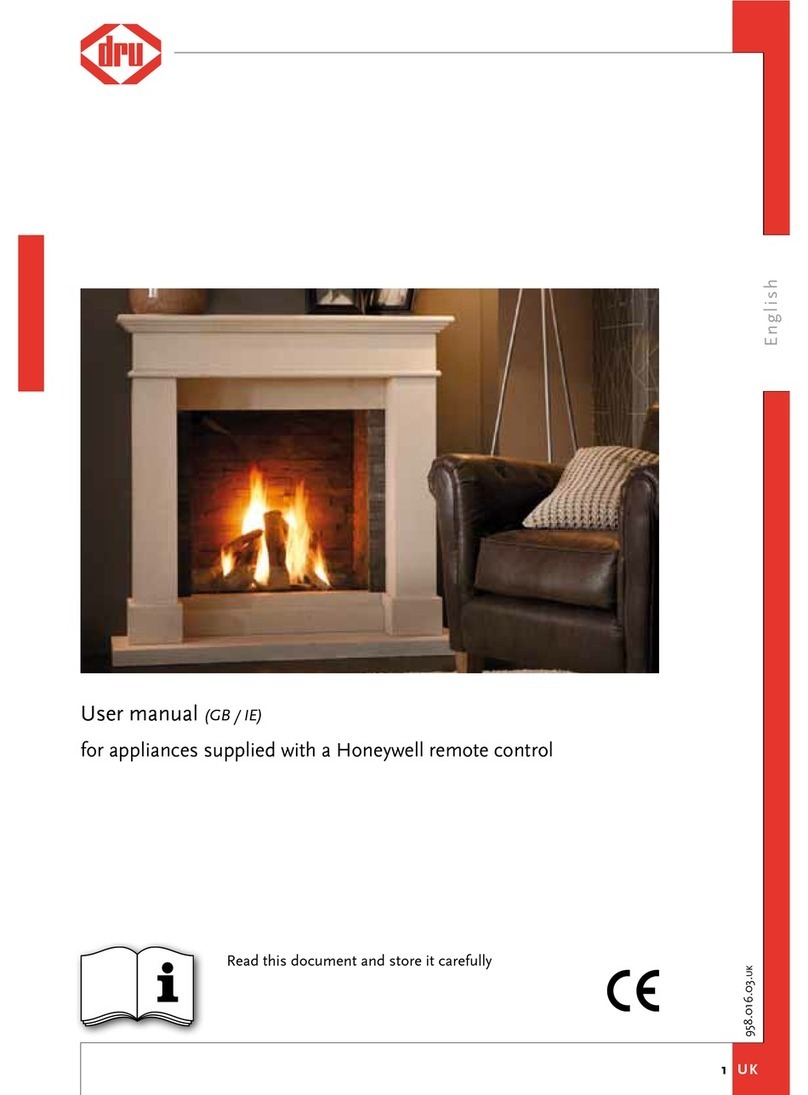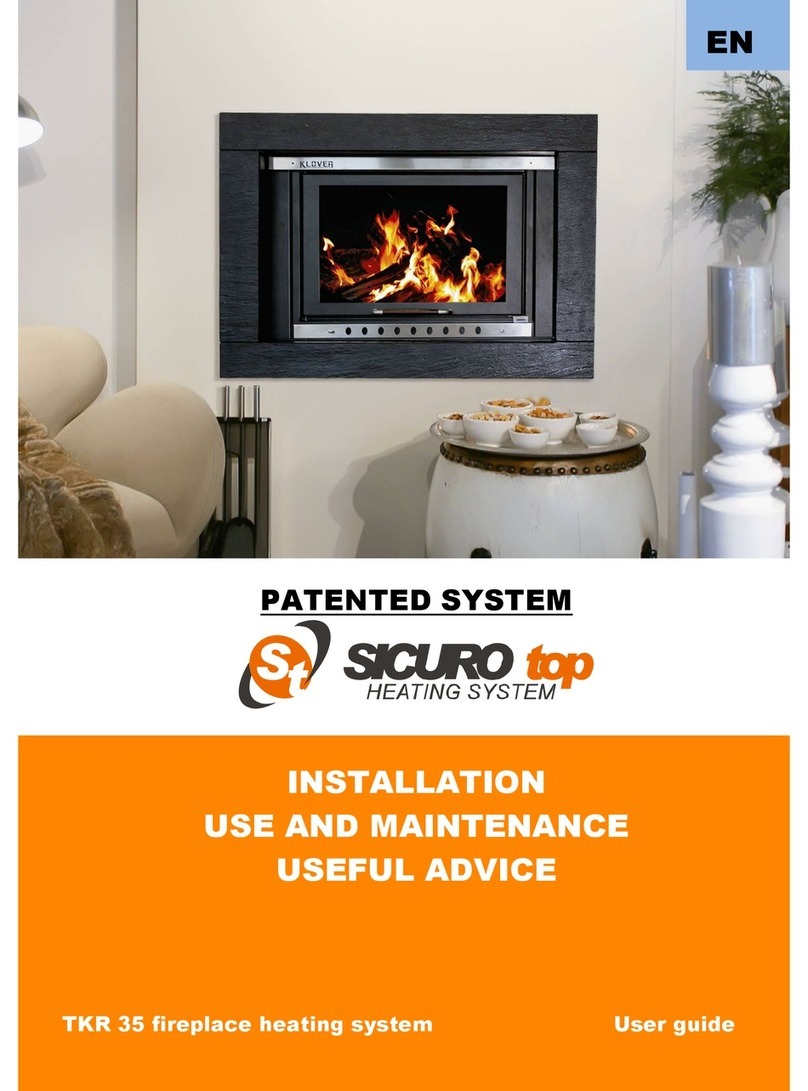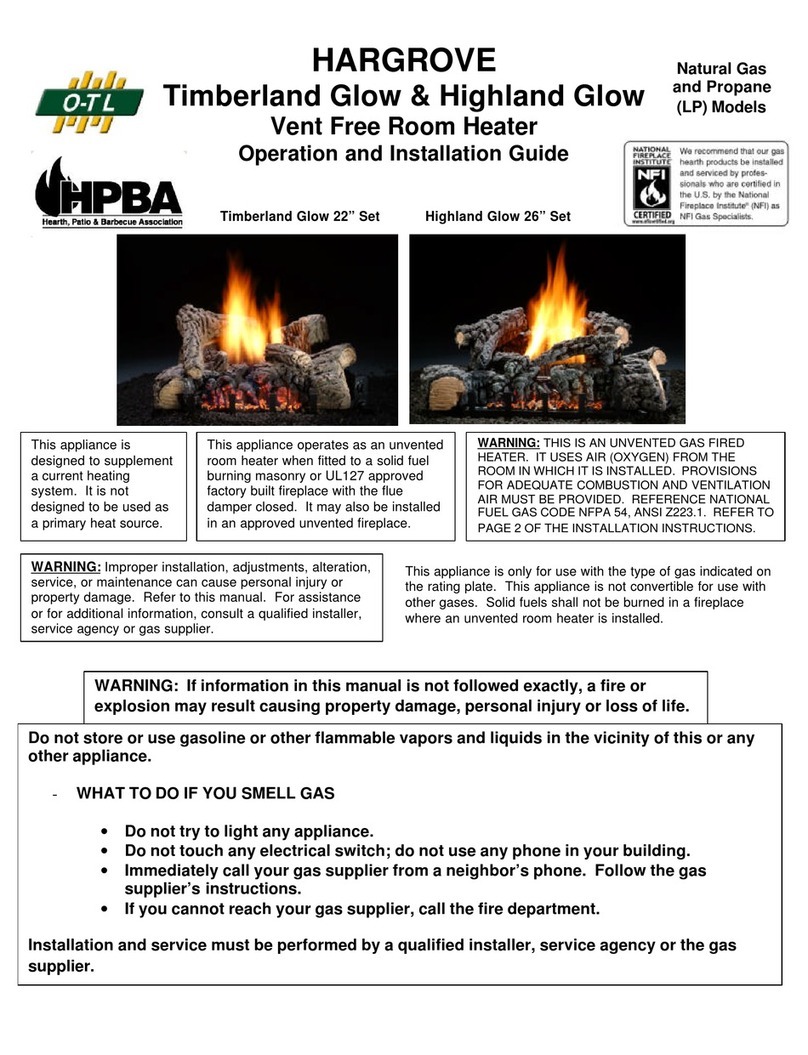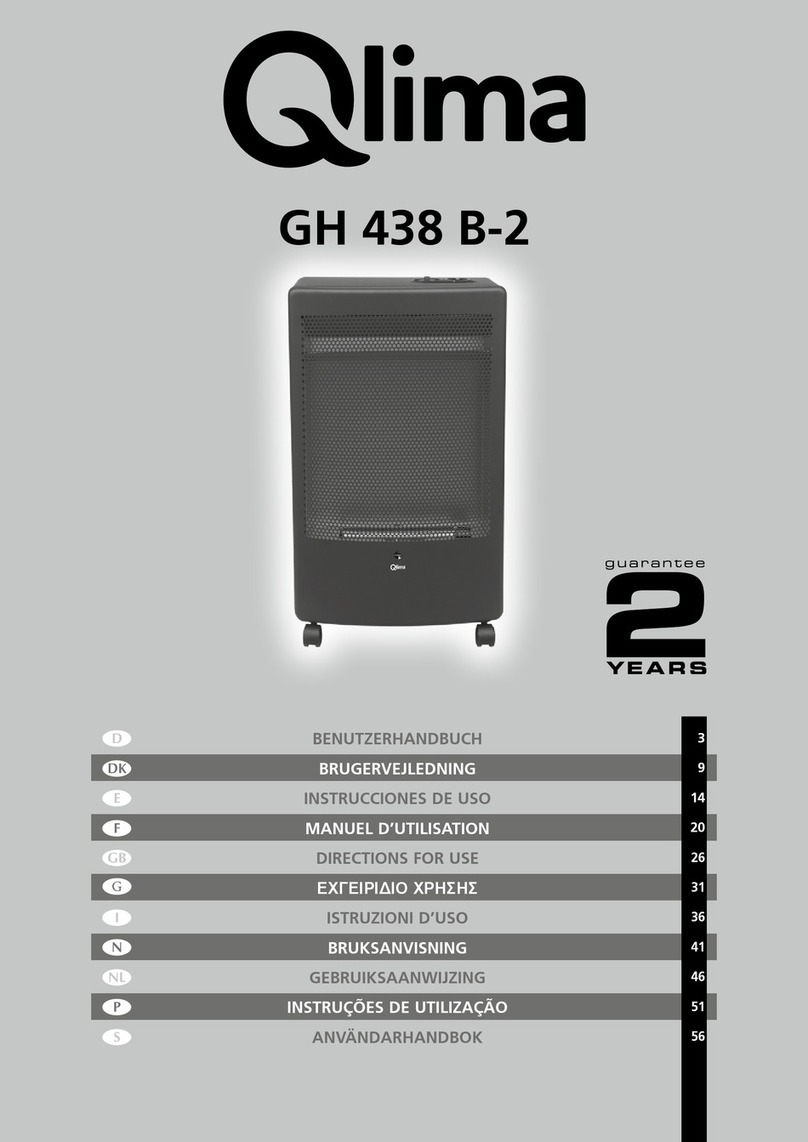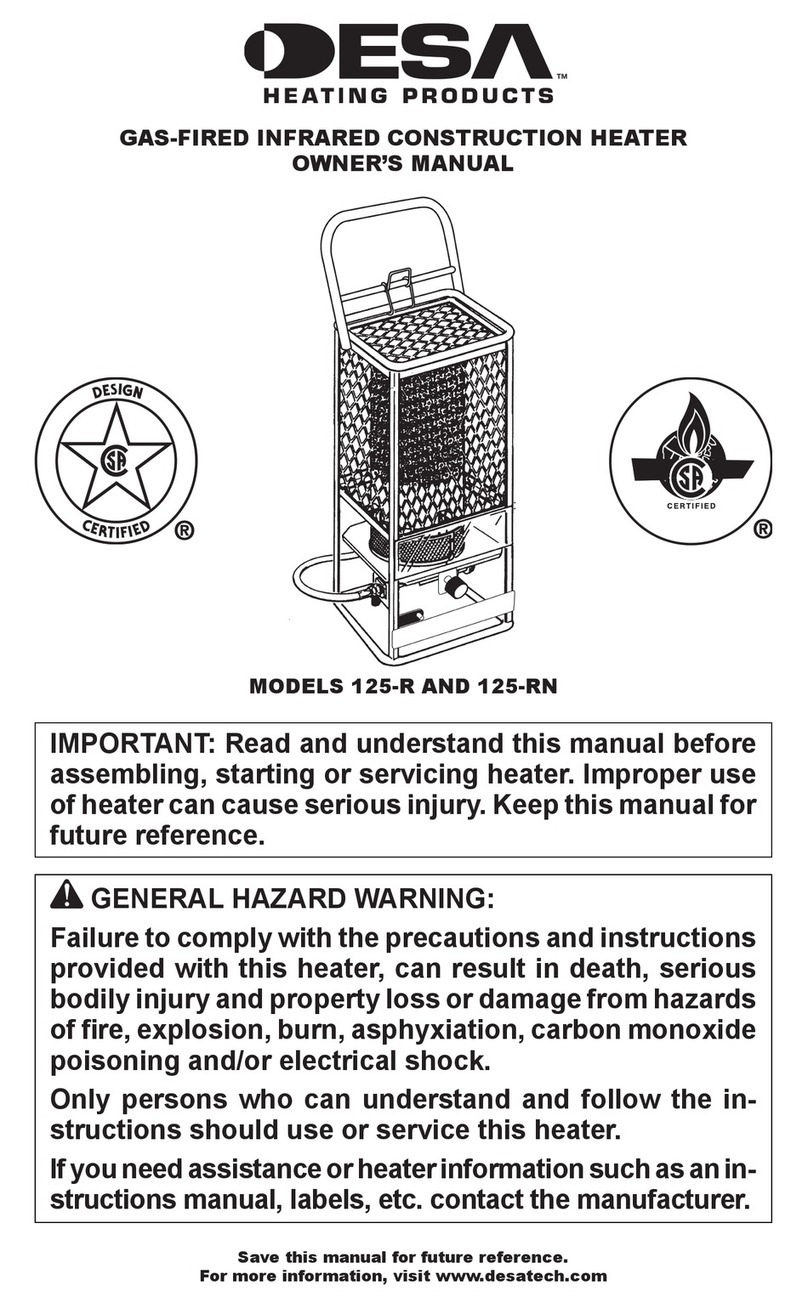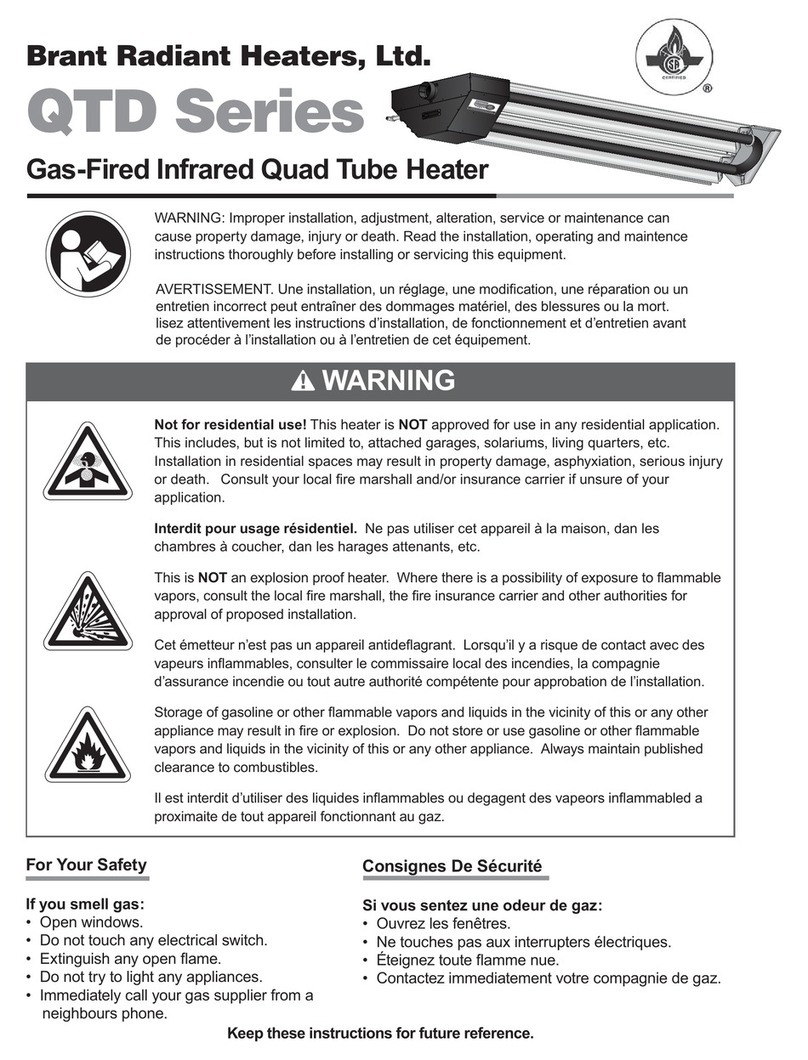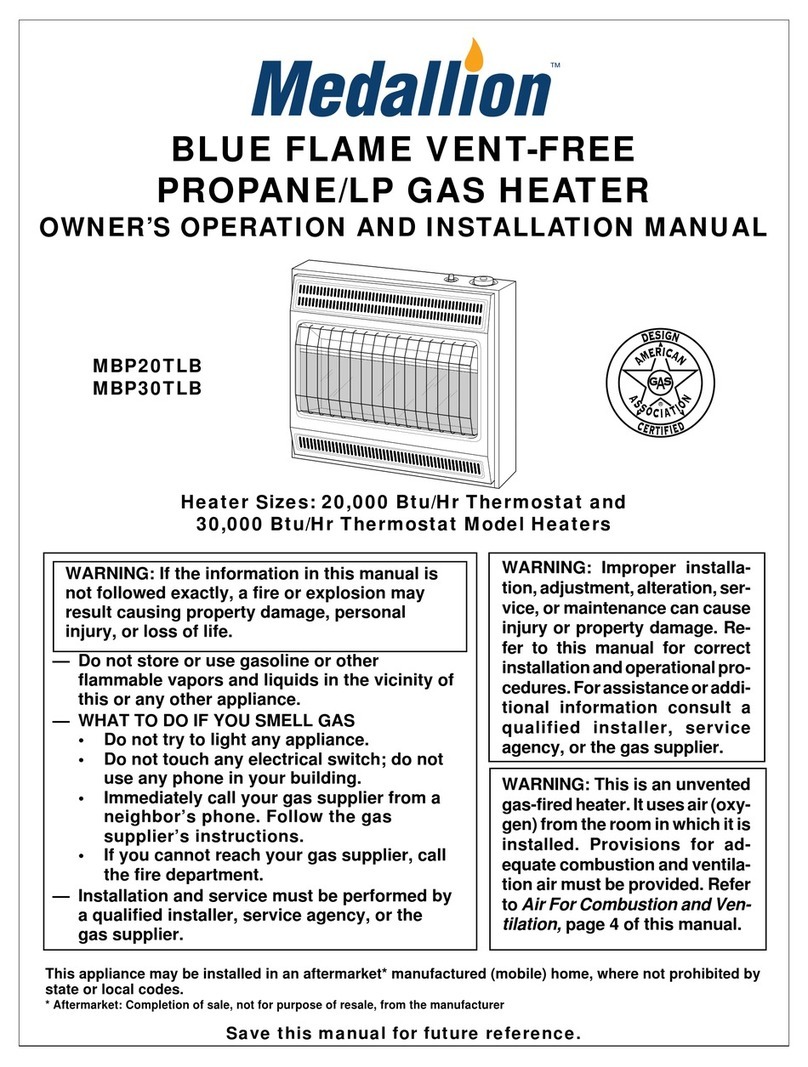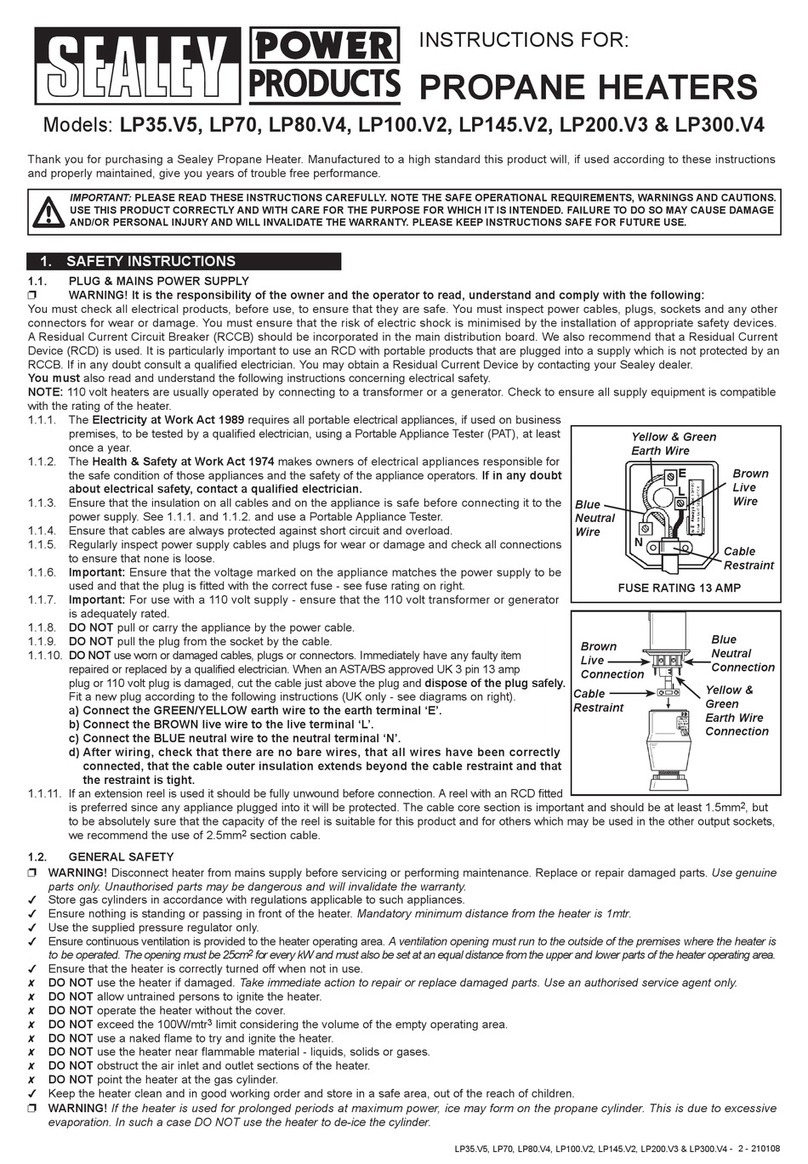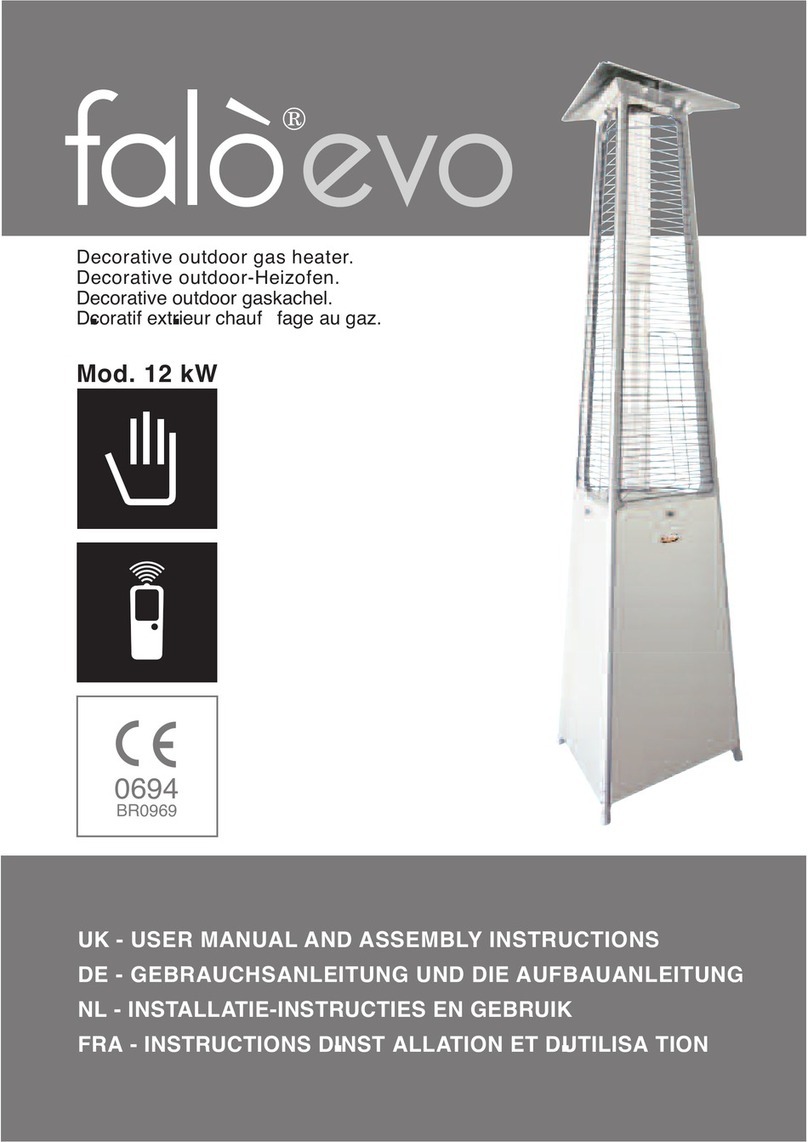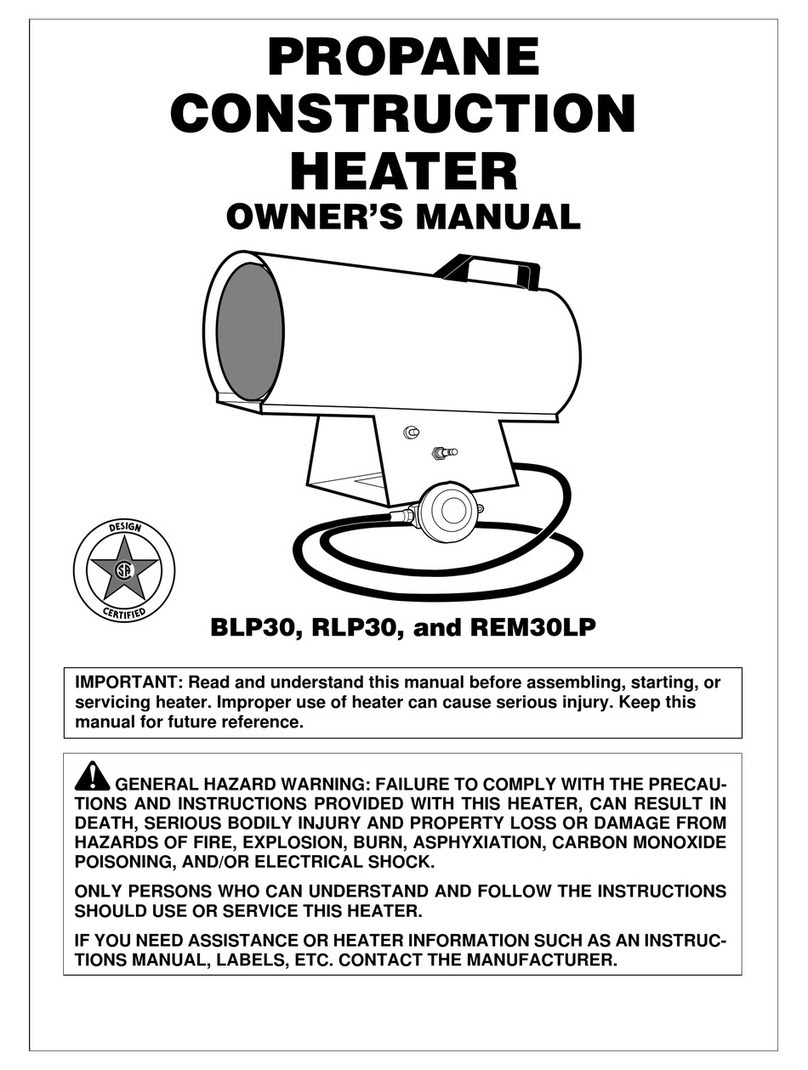
LP-325 Rev. 4.4.17
10
When drawing combustion air from the outside into the
mechanical room, care must be taken to provide adequate
freeze protection.
Failure to provide an adequate supply of fresh combustion air can
cause poisonous ue gases to enter the living space, resulting
in severe personal injury or death. To prevent combustion air
contamination, see Table 2.
G. Prevent Combustion Air Contamination
Install intake air piping for the appliance as described in the
Venting Section, this manual. Do not terminate exhaust in
locations that can allow contamination of intake air.
Ensure that the intake air will not contain any of the
contaminants in Table 2. Contaminated air will damage the
appliance, resulting in possible substantial property damage,
severe personal injury, or death. For example, do not pipe
intake air near a swimming pool or laundry facilities. These
areas always contain contaminants.
Products to Avoid Areas Likely to Have
Contaminants
Spray cans containing
uorocarbons
Dry cleaning / laundry areas
and establishments
Permanent wave solutions Swimming pools
Chlorinated waxes / cleaners Metal fabrication plants
Chlorine-based swimming pool
chemicals Beauty shops
Calcium chloride used for thawing Refrigeration repair shops
Sodium chloride used for water
softening Photo processing plants
Refrigerant leaks Auto body shops
Paint or varnish removers Plastic manufacturing plants
Hydrochloric or Muriatic acid Furniture renishing areas
and establishments
Cements and glues New building construction
Antistatic fabric softeners used in
clothes dryers Remodeling areas
Chlorine-type bleaches, laundry
detergents, and cleaning solvents Garages and workshops
Adhesives used to fasten building
products
Table 2 - Products and Areas Likely to Have Contaminants
NOTE: DAMAGE TO THE APPLIANCE CAUSED BY
EXPOSURE TO CORROSIVE VAPORS IS NOT COVERED
BY WARRANTY. (Refer to the limited warranty for complete
terms and conditions.)
In the Commonwealth of Massachusetts and As Required by
State and Local Codes:
Installation of Carbon Monoxide Detectors: At the time of
installation or replacement of the vented gas fueled appliance,
the installing plumber or gas tter shall observe that a hard wired
carbon monoxide detector with an alarm and battery back-up is
installed on the oor level where the gas appliance is installed,
unless the appliance is located in a detached, uninhabitable
structure separate from the dwelling, building, or structure used
in whole or in part for residential purposes.
In addition, the installing plumber or gas tter shall observe
that a hard wired carbon monoxide detector with an alarm
and battery back-up is installed on each additional level of
the dwelling, building, or structure served by the vented gas
appliance. It shall be the responsibility of the property owner
to secure the service of qualied licensed professionals for the
installation of hard wired carbon monoxide detectors.
Do not attempt to vent this appliance by any means other
than those described in this manual. Doing so will void the
warranty and may result in severe personal injury or death.
Approved Carbon Monoxide Detectors: Each carbon
monoxide detector as required in accordance with the above
provisions shall comply with NFPA 70 and be ANSI/UL 2034
listed and IAS certied.
F. Carbon Monoxide Detectors
there is adequate combustion and ventilating air. NOTE: To
prevent combustion air contamination, see Table 2.
Combustion air from the indoor space can be used if the space
has adequate area or when air is provided through a duct or
louver to supply sucient combustion air based on the appliance
input. Never obstruct the supply of combustion air to the
appliance. If the appliance is installed in areas where indoor air is
contaminated (see Table 2) it is imperative that the appliance be
installed as direct vent so that all combustion air is taken directly
from the outdoors into the appliance intake connection.
Unconned space is space with volume greater than 50 cubic
feet per 1,000 BTU/hr (4.8 cubic meters per kW) of the total
input rating of all fuel-burning appliances installed in that space.
Rooms connected directly to this space through openings not
furnished with doors are considered part of the space. See
Venting Section for details.
Conned space is space with volume less than 50 cubic feet per
1,000 BTU/hr (4.8 cubic meters per kW) of the total input rating
of all fuel-burning appliances installed in that space. Rooms
connected directly to this space through openings not furnished
with doors are considered part of the space.
When drawing combustion air from inside a conventionally
constructed building to a conned space, such space should be
provided with two permanent openings: one located 6” (15 cm)
below the space ceiling, the other 6” (15cm) above the space
oor. Each opening should have a free area of one square inch
per 1,000 BTU/hr (22cm2/kW) of the total input of all appliances
in the space, but not less than 100 square inches (645cm2).
If the conned space is within a building of tight construction, air
for combustion must be obtained from the outdoors as outlined
in the Venting section of this manual.
a. In the event that the vented gas fueled appliance is
installed in a crawl space or attic, the hard wired carbon
monoxide detector with alarm and battery back-up shall be
installed on the next adjacent oor level.
b. In the event that these requirements cannot be met
at the time of completion of installation, the owner shall
have a period of thirty (30) days to comply with the above
requirements; provided, however, that during said thirty (30)
day period, a battery operated carbon monoxide detector
with an alarm shall be installed.
